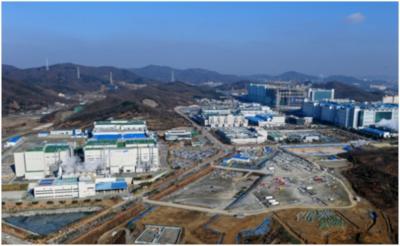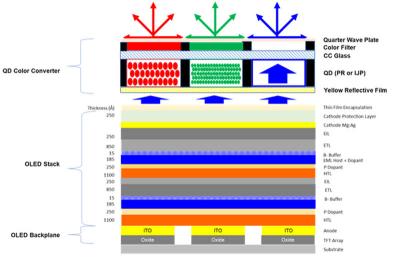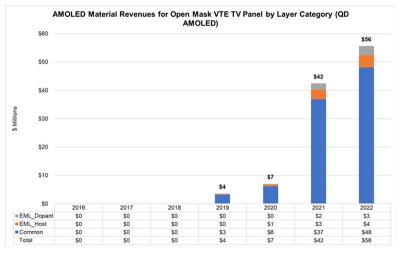Samsung Display formally announced its decision to invest â©13.1 trillion (around $10.85 billion USD) in QD-OLED TV R&D and production lines. The investment plan will span 6 years (2019-2025) and the first step will be to convert an LCD production line in SDC's L8 fab in Tangjong, Korea to QD-OLED production.

The Tangjong line will be converted from 125k monthly substrates of LCD production to 30k monthly QD-OLED substrates, and mass production will begin in Q1 2021. In the long run SDC plans to convert all its 8-Gen LCD lines (360,000 monthly substrates) to QD-OLED production (which will yield around 100,000 monthly QD-OLED substrates).

According to DSCC, Samsung's QD-OLEDs will offer several advantages compared to LG's current WRGB (four subpixels + color filters) system. Samsung will be able to use three sub pixels and only two emitting layers (LGD uses four), and so its stack will include 13 layers compared to 22 layers in LGD's TVs - which means fewer deposition stages, improved yields and lower material costs.
In fact, DSCC estimates that a square meter of QD-OLED production will require materials that cost around $26 - compared to almost $95 in a meter of WOLED production.

You can see DSCC's QD-OLED revenue forecast here - although they admit that as Samsung faces several technical challenges before it could launch commercial QD-OLED TVs, its forecast could be way off.
The two main challenges for QD-OLEDs, according to DSCC, are efficient blue OLED emitters (first-gen will likely use fluorescent emitters) and a good quantum-dot color converter (QDCC). Light management in this architecture is also a serious challenge.
Comments
What's the return on $11 billion when OLED becomes a cheap Chinese commodity in 4 years?
Don't see that coming. There should have been significant Investments into R&D and Pilot lines at Chinese Panel makers to be barely able to produce OLED TV.
Samsung is doing everything right since they now found a way to come around LG IP Position to make OLED TV Panels.
If chinese makers would have followed LG to go for White + CF, they could have already done so.
QD-OLED is quite exclusive for Samsung since they have in-house QD Technology and supply chains lined up for QD and for OLED.
are they using the nanosys format or just borrowing their technology ?


It will be interesting to see how these compare against LG's offerings. I am not all that familiar with the QD concept, but with the fact that the QDs are fluorescent, I would hope that the brightness is much higher than standard OLED.
That said, I am glad to see competition finally entering the marketplace.